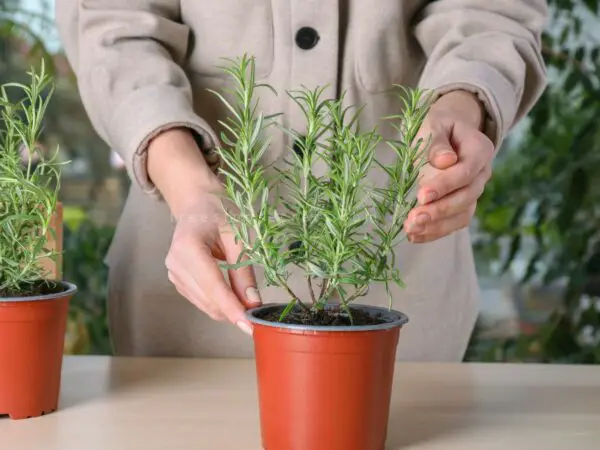Palm trees, known for their association with tropical paradise, bring to mind sandy beaches and clear blue waters. Green coconuts can be grown in a greenhouse alongside other plants. However, growing coconut palm plants in a greenhouse demands specific conditions that mimic their natural habitat, including green coconuts. Many are unaware that it's feasible to cultivate coconut trees, palm plants, and potatoes in containers, even in non-tropical areas or a greenhouse. The lack of knowledge about palm cultivation contributes to the underutilization of coconut tree cultivation among enthusiasts in the greenhouse.
Historically, people have only experienced coconuts as products from distant lands rather than as plants they can grow themselves, such as palm trees. This oversight has led to a scarcity of information on how to successfully grow coconut trees in a container at home in a greenhouse. By shedding light on this overlooked method, we can encourage more people to explore the possibility of nurturing their own coconut palm trees in a greenhouse plant.
Overview
There are several reasons why growing coconut trees at home isn't as common as other houseplants, despite their exotic appeal:
Space constraints: Coconut palms are big trees, even the dwarf varieties. They can reach 20-30 feet in height, with extensive root systems needing ample space to anchor and flourish. Most homes simply don't have the capacity to accommodate such a plant comfortably.
Climate requirements: Coconut palms thrive in tropical climates with warm temperatures (ideally above 21°C), high humidity, and plenty of bright sunlight. Replicating these conditions consistently indoors, especially in colder regions, can be challenging and resource-intensive.
Slow growth and fruiting: Growing a coconut palm from seed can take months to years to germinate and even longer to reach maturity. Even then, fruiting within a home environment is highly unlikely, even for dwarf varieties.
Maintenance and challenges: Coconut palms require specific soil pH, regular watering, and proper fertilization. They can be susceptible to pests and diseases indoors, demanding additional vigilance and care. The falling coconuts, though charming, can pose safety hazards within a home environment.
Alternatives abound: While the allure of coconuts is undeniable, many other tropical plants offer similar aesthetic appeal and are better suited for indoor growing. These may include smaller palm varieties, pineapple plants, or hibiscus, requiring less space and maintenance while providing a touch of the tropics.
Therefore, while growing a coconut tree at home can be a fascinating and rewarding experience, the challenges often outweigh the benefits for most people. For a taste of the tropics indoors, alternative plants may be a more practical and satisfying choice.
However, if you have the space, climate, and dedication, growing a coconut palm can be a fun and unique project. Just be prepared for the long-term commitment and challenges involved!
Exploring Coconut Tree Cultivation
Home Growth Challenges
Home growth of coconut trees faces significant challenges. Firstly, the space required for a mature coconut tree or palm is substantial, making it impractical for many home gardens. Consider using a greenhouse to grow the plant and share a video of your experience. These coconut palm trees have a long maturation period of 5-6 years before bearing fruit, demanding patience and commitment from plant growers in the greenhouse. Moreover, maintaining consistent warm temperatures in a greenhouse can be difficult for growing coconut palm plants, posing another obstacle to successful home cultivation.
Environmental Suitability
Coconut palm trees are best suited to tropical and subtropical climates due to their preference for warm temperatures and high humidity. They thrive in a greenhouse or outdoor environment, making them an ideal plant for these regions. Coconut palms thrive in coastal areas with well-draining soil and ample sunlight, making them a popular plant for beachfront landscapes. The environmental requirements make it challenging for individuals living in non-tropical regions to cultivate coconut palm trees at home without replicating these specific conditions.
Cold Weather Survival
One of the primary obstacles to growing coconut palm trees at home in non-tropical regions is their vulnerability to cold temperatures. These coconut palm trees cannot survive freezing conditions and are particularly susceptible when young. Protecting coconut palms from frost damage is crucial for those attempting to grow coconuts in cooler climates.
Cultivating Outside Tropics
Cultivating coconut palm trees outside the tropics demands careful attention to environmental factors such as temperature, humidity, and soil conditions. In non-tropical regions, greenhouse cultivation can create suitable microclimates mimicking tropical conditions necessary for coconut tree growth. Container gardening also offers a viable option for individuals in non-tropical areas by allowing them to control the environment more effectively, including growing coconut palms.
Distinguishing Palm Varieties
Palm vs Coconut Trees
Palm trees encompass various species, including the coconut palm. While all coconut trees are palms, not all palm trees produce coconuts. This distinction sets true coconut trees apart from other palm species. The unique characteristics of coconut palms, such as their ability to thrive in coastal areas and sandy soils, make them distinguishable from other palm varieties.
Coconut Tree Types
There are two main types of coconut trees: tall and dwarf varieties. Tall coconut trees yield larger coconuts but have a longer time to maturity, typically taking 5-7 years before producing fruit. On the other hand, dwarf coconut trees are ideal for smaller spaces and have a shorter time to maturity, usually yielding coconuts within 3-4 years of planting. Their compact size makes coconut palms suitable for home gardens or urban settings with limited space.
Coconut palms stand out among the diverse range of palm tree species due to their unique features and distinct types. Understanding these differences can help individuals make informed decisions when considering growing coconut trees at home.
Ideal Growth Conditions
Tropical Climate Needs
Tropical climates are essential for the natural growth of coconut trees. These regions provide consistent warmth and high humidity, which are crucial for the healthy development of coconut trees. In coastal areas within the tropics, these climate conditions are optimal for cultivating coconut trees as they mimic their native habitat.
Soil and Sunlight Requirements
The right conditions for growing coconut trees include well-draining sandy soil, which is vital for healthy root development. This type of soil allows excess water to drain away from the coconut palm roots, preventing waterlogging that can lead to root rot. Full sunlight exposure is crucial for optimal growth and fruit production in coconut trees. Adequate air circulation around the coconut palm tree is also necessary to prevent diseases and ensure overall tree health.
Coconut trees thrive in tropical climates due to the warm temperatures and high humidity levels present in these regions. The consistent warmth supports the growth of coconut trees throughout the year, while high humidity helps maintain their health and vitality. Coastal areas within the tropics offer an ideal environment for coconut tree cultivation as they closely resemble the natural habitat where these trees flourish.
In terms of soil requirements, well-draining sandy soil plays a pivotal role in ensuring healthy root development in coconut trees. This type of coconut palm soil allows excess water to percolate through quickly, preventing waterlogging that can be detrimental to the tree's roots. Moreover, full sunlight exposure is essential for proper growth and fruit production in coconut trees. Without adequate sunlight, these trees may struggle to produce an abundant yield of coconuts.
Coco is crucial for preventing diseases and maintaining overall tree health. Good air circulation helps reduce the risk of fungal infections and other diseases that can affect coconut trees when they are grown in stagnant or humid conditions.
Indoor Coconut Palm Care
Potting and Soil Tips
Use large containers with drainage holes when potting young coconut trees. This ensures proper coco water drainage, preventing the roots from becoming coco waterlogged. A mix of sand, perlite, and peat moss creates an ideal potting medium for coconut trees. The sandy soil, combined with coco, allows for good aeration and drainage, while the peat moss retains moisture essential for healthy root development. Regularly check soil moisture levels to avoid overwatering or underwatering potted coconut trees. This can be done by inserting a coco finger into the soil to gauge its moisture content.
Light and Temperature Control
Ensure that outdoor-grown coconut trees receive full sun exposure throughout the day. Coconut palms thrive in bright sunlight, which is crucial for their growth and fruit production. Protect young coconut trees from temperature fluctuations by providing shelter during colder months. Sudden drops in temperature can harm young coconut palms, so covering them during chilly nights or moving them indoors temporarily can help safeguard their health. Maintaining consistent warm temperatures above 70°F (21°C) is vital for healthy growth of coco. This tropical coco plant requires warmth to flourish, so ensuring a consistently warm environment is key to successful indoor cultivation of coco.
Coconut Tree Varieties for Home Gardens
Dwarf Coconut Species
Dwarf coconut species are perfect for small gardens or container cultivation. These coco varieties are a popular choice for home growers due to their ability to reach fruit-bearing age sooner than tall varieties. Some dwarf coconut species exhibit compact growth habits, making them adaptable to limited spaces. This adaptability is especially beneficial for those looking to grow coconut trees in confined areas such as balconies or patios.
Tall Coconut Varieties
Tall coconut varieties produce larger coconuts with substantial water content and meat, making them desirable for home growers seeking a bountiful harvest. However, it's important to note that tall coco varieties may take up to 7 years before producing their first fruits, requiring patience from home growers. These coconut palms can reach impressive heights of 80 feet or more when fully matured, so ample space is necessary when cultivating these majestic trees at home.
Benefits of Home-Grown Coconut Trees
Nutritional Advantages
Coconuts are not just delicious; they also offer a plethora of nutritional benefits. They are rich in fiber, vitamins, minerals, and coco, making them an excellent addition to a healthy diet. The flesh of the coconut contains essential nutrients such as iron, potassium, and manganese, while the coconut water is a natural source of hydration packed with electrolytes and antioxidants. Furthermore, the oil extracted from mature coconuts is abundant in healthy fatty acids that have been shown to have various health benefits. These coco fatty acids can be used for cooking or as part of skincare routines.
Ecological Contributions
Beyond their nutritional value, home-grown coconut trees contribute significantly to the environment. The extensive root systems of coco trees help reduce erosion along coastlines, providing vital coastal protection. This makes them an invaluable asset in regions prone to tropical storms and rising sea levels, especially in areas with abundant coco resources. The versatility of coconuts extends beyond just their edible parts; every part of the tree can be used for various purposes, reducing waste generation and promoting sustainability across different industries. From using the husk for fuel or as a growing medium for plants to utilizing the palm leaves for roofing material or crafts, coconuts provide a sustainable resource that aligns with eco-friendly practices. Moreover, coconut plantations play a crucial role in supporting local economies by providing livelihoods for communities in tropical regions where these trees thrive.
Essential Care for Coconut Trees
Watering and Fertilizing
Regular watering is vital, especially during the initial growth stages of coconut trees. Adequate water, along with coco, helps establish robust root systems, ensuring the tree's stability and ability to access essential nutrients in the soil. Balanced fertilization is crucial for the optimal growth of coconut trees. A fertilizer containing micronutrients supports healthy foliage and fruit production in mature coconut trees. However, it's important to avoid over-fertilizing coco as this can lead to nutrient imbalances, negatively impacting the overall health of the tree.
Pruning and Maintenance
Pruning plays a significant role in maintaining the health and aesthetics of coconut trees. Regular pruning not only removes dead fronds but also promotes air circulation within the canopy of mature coconut palms. This improved airflow reduces the risk of fungal infections and pest infestations while enhancing overall tree vitality, especially in coco plantations. Moreover, keeping the coco trunk clean by removing old leaf bases is essential in preventing pest infestations and disease development. Regular inspection for pests and diseases is critical for early detection and effective management to ensure the long-term health of coconut trees.
Neem oil emerges as a valuable natural solution. Neem oil acts as a potent organic pesticide with low environmental impact, effectively combating common pests such as aphids, mealybugs, and scale insects that can threaten coconut tree health. Its versatility extends to disease control as well; neem oil demonstrates efficacy against fungal diseases like leaf spot and powdery mildew that may affect coconut palms.
Harvesting Your Coconuts
Picking and Storing Coconuts
Harvesting coconuts at the right time is crucial for enjoying their various products. When coconuts are still green or slightly ripened, they are perfect for drinking the refreshing water inside them. On the other hand, mature brown coconuts can be harvested to extract delicious creamy white meat or to create homemade products like milk or oil. Properly storing harvested coconuts in a cool, dry place away from direct sunlight is essential to maintain their freshness and quality over time.
Maximizing Yield
To maximize the yield of coconut trees grown at home, several factors need to be considered. Providing adequate space between planted coconut trees is crucial as it allows proper light penetration and airflow, which are essential for maximizing yield potential. Supplemental irrigation during dry periods ensures consistent fruit production even in challenging weather conditions, especially for crops like coco. Moreover, careful selection of high-yielding coconut tree varieties can significantly impact the overall yield from home-grown coconut trees.
Troubleshooting Growth Issues
Pest and Disease Management
Regularly inspect coco leaves, trunk, and fruits for signs of pest infestation or disease symptoms such as discoloration or wilting leaves. Pests like rhinoceros beetles can cause significant damage to coconut trees by feeding on the growing points. To minimize the impact of coco beetles, physically remove them when spotted and consider using organic insecticidal soaps. These coco measures can help prevent irreparable harm to the tree's growth.
Proactive steps are crucial in maintaining healthy coconut palms. Maintaining good hygiene around the planting area is essential in preventing fungal diseases like bud rot in young coconuts. This includes removing fallen leaves and debris promptly to reduce the risk of infection. By taking these precautions, you can safeguard your coconut tree from potential threats and ensure its robust growth.
Addressing Nutrient Deficiencies
Nutrient deficiencies can manifest through symptoms such as yellowing fronds, indicating a lack of essential nutrients like magnesium or potassium. Implementing a targeted fertilization program tailored to address specific deficiencies is vital for promoting optimal growth. By providing the necessary nutrients, you can enhance the overall health and vigor of your coconut palm.
Moreover, correcting pH imbalances in the soil plays a pivotal role in improving nutrient availability to growing coconut palms over time. Application of lime or sulfur helps regulate soil pH levels, ensuring that essential nutrients are readily accessible to support the tree's development. This proactive approach effectively addresses nutrient deficiencies, contributing to the sustained vitality of your coconut tree.
Conclusion
So, why not give it a shot and grow your own coconut tree at home? With the right care and attention, you can enjoy the satisfaction of nurturing a tropical treasure right in your backyard. From selecting the ideal variety to providing the perfect conditions, you've got all the tools to make it happen. Plus, imagine the joy of harvesting your very own coconuts – talk about a taste of paradise right at home!
Now that you've learned the ins and outs of cultivating coconut trees, it's time to roll up your sleeves and get started. Whether you're aiming for a lush indoor oasis or enhancing your outdoor garden, remember that with a little patience and a lot of love, you can watch your coconut tree thrive. So, what are you waiting for? Get ready to bring a touch of the tropics into your own space and embark on this rewarding green journey.
Frequently Asked Questions
Why should I consider growing coconut trees at home?
Growing coconut trees at home can be a rewarding experience, providing fresh coconuts and a tropical ambiance. It's like having your own mini paradise in your backyard!
What are the ideal growth conditions for coconut trees?
Coconut trees thrive in warm climates with plenty of sunlight and well-drained soil. They need regular watering and protection from strong winds.
Can I grow coconut trees indoors?
While young coconut palms can be grown indoors, they will eventually outgrow their space. Consider starting them indoors and then transitioning them outdoors as they mature.
What are the benefits of home-grown coconut trees?
Home-grown coconut trees provide an abundant supply of fresh coconuts, offering a sense of self-sufficiency and the satisfaction of nurturing a tropical icon right in your own garden.
How do I harvest coconuts from my tree?
Harvesting coconuts involves carefully climbing the tree or using a long-handled harvesting tool to reach the ripe fruits. Be sure to follow safety precautions when harvesting coconuts.
Image Source: Paid image from CANVA




